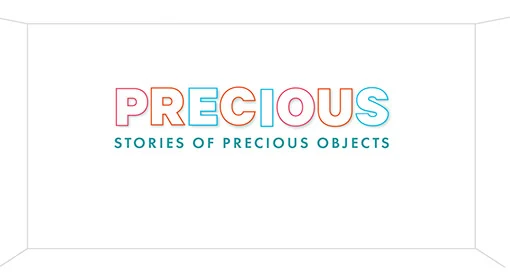
Precious workbook — Ages 11 and up
This book will guide you through the role of libraries, museums and galleries in caring for the precious objects of Aotearoa New Zealand. You will learn about finding, caring for, and exhibiting your own precious object. Suitable for ages 11 and up.
Precious workbook formats
This is the web version of the the Precious workbook.
You can also download the PDF version Precious workbook, (pdf, 3.5MB)
Ka tuia te rangi i runga nei.
Ka tuia te papa i raro.
Ka tuia te maunga whakahī e karapoti nei.
Ko Te Ahumairangi.
Ahu atu ana ki te awa o Tiakiwai.
Nau mai, haere mai ki Te Puna Mātauranga o Aotearoa.
Tēnei whare e whakaahuru nei.
I ngā taonga a kui mā, a koro mā.
Aupiki mai ki te whakaaturanga o He Tohu.
Areare mai ōu taringa ki wēnei kōrero.
Hei arataki i a koutou.
Nō reira.
E ngā mana. E ngā reo.
Tēnā koutou, tēnā koutou, tēnā koutou katoa.
Bound to the sky above.
Bound to the earth.
Bound to the mountain that stands proudly.
Te Ahumairangi.
And the waters of Tiakiwai that extend out before us.
Welcome to the National Library of New Zealand.
This safe place that stands as guardian.
For the taonga housed within left by our forefathers.
Ascend to the place where He Tohu lives.
Let your ears receive these words.
A guide for you all.
Therefore.
All authorities, all voices (all people).
We greet you.
Nau mai, haere mai | Welcome everyone!
This book will guide you through a basic understanding of the role of libraries, museums and galleries in caring for the precious objects of Aotearoa New Zealand. It will also guide you through finding and caring for and exhibiting your own precious object.
The National Library of New Zealand Te Puna Mātauranga o Aotearoa collects books, paintings, illustrations, social media and even comics and cartoons as well as other precious objects that relate to Aotearoa, New Zealand. These are the taonga of our nation.
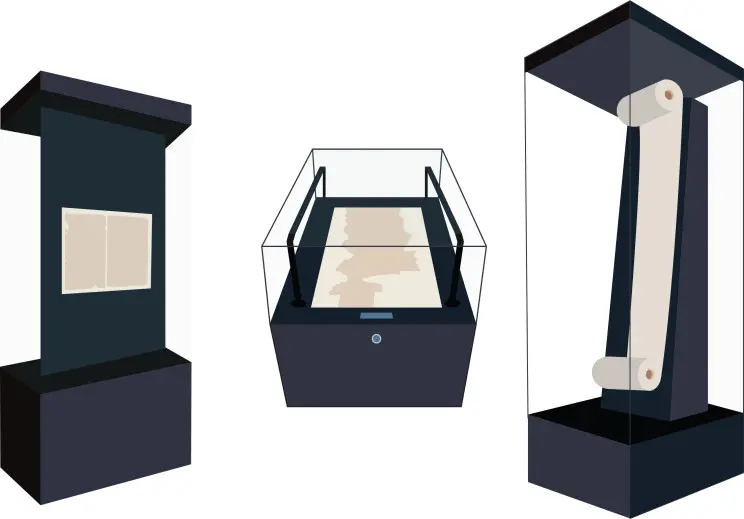
Drawings of the 1835 He Whakaputanga, 1840 Te Tiriti o Waitangi, and 1893 Women's Suffrage Petition in their cases at the He Tohu exhibition.
Three of Aotearoa’s most significant taonga are on display at the National Library in the exhibition He Tohu: a declaration, a treaty and a petition. The three documents are; He Whakaputanga o te Rangatiratanga o Nu Tireni – the Declaration of Independence (1835), Te Tiriti o Waitangi – the Treaty of Waitangi (1840) and Te Petihana Whakamana Poti Wahine – Women's Suffrage Petition (1893).
These three documents are important as they show what is possible when people come together for a common cause. They have shaped our country since their signing over 150 years ago.
As the kaipupuri (caretakers) of these important documents, the National Library and Archives New Zealand Te Rua Mahara o te Kāwanatanga welcome you to join us on this Precious learning journey.
The whakatauki (proverb) for He Tohu is 'He whakapapa kōrero, He whenua kura', which means 'talking about the past to create a better future' — understanding our history and empowering people to create a positive future for Aotearoa New Zealand.
Tō taonga | Your taonga
Your precious objects and those taonga in museum and library collections also help us think about and understand the past so we can better navigate the future. They tell the story of a person or a place – what was important to us as an individual or a nation at that time.
We’re keen to learn about the taonga or precious objects that have shaped you. By exploring the activities in this book you can discover why we consider some things precious, as well as uncover and share your own precious objects and their stories.
To find your precious object you’ll take some of the same steps a museum curator or librarian would when preparing an exhibition: taking a photo, doing a condition report and learning how to care for it so that it can be passed on to the next generation. We are keen for you to discover more about yourself, your values and the objects in your world.
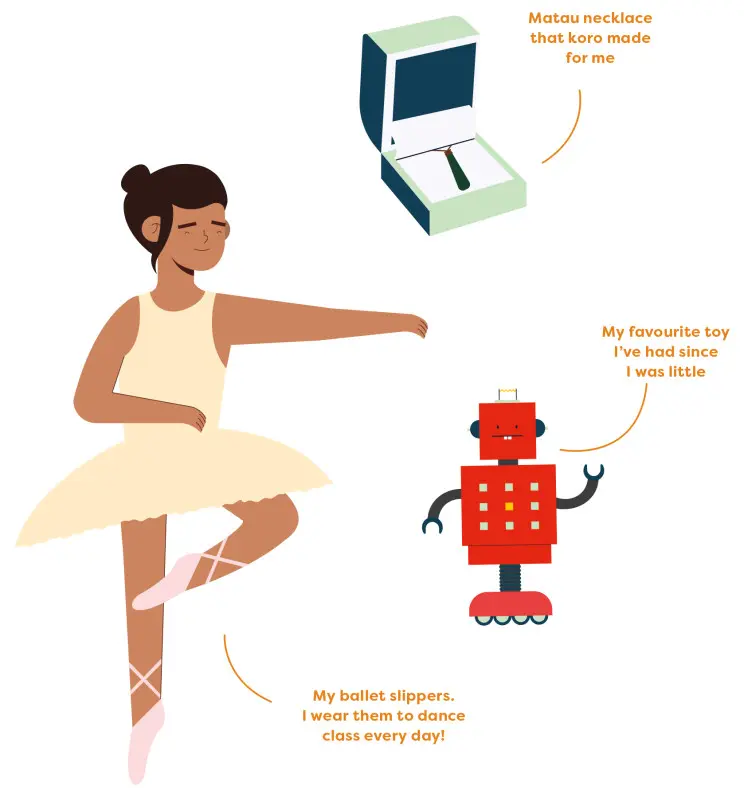
Ko wai ahau? | Who am I?
Before you start looking for your precious object,let’s start by acknowledging the most important thing in your world – you!
A pepeha is a way of thinking about yourself and your place in the world. A pepeha tells the story of the people and places you are connected to. Ask your parents or whānau where your ancestors came from and what places they feel a close connection with.
Choose one of the two templates to complete.
Tōku pepeha
Ko ______________________ te waka
Ko ______________________ te maunga
Ko ______________________ te awa
Ko ______________________ te marae
Ko ______________________ te iwi
Ko ______________________ te hapū
Ko ______________________ tōku ingoa
My pepeha
Ko ______________________ te maunga e rū nei taku ngākau (is the mountain that speaks to my heart)
Ko ______________________ te awa e mahea nei aku māharahara (is the river that alleviates my worries)
Nō ______________________ ahau (I am from)
Ko ______________________ tōku ingoa (My name is)
This pepeha template is inclusive of tauiwi, which means non-Māori or those from afar.
Tō wāhi motuhake | Your special place
Draw or write something about your special natural place.
Why is it important to you, what makes it special?
I mōhio rānei koe? | Did you know?
Sometimes our surname can help uncover things about our family history.
Where does your family name come from?
Who could you ask to find out more about your name?
Does your name have a special meaning?
Is there a story related to your name?
You may like to ask a family member about where your ancestors came from, and what places they feel a close connection with.
Te Puna Mātauranga o Aotearoa | National Library of New Zealand
The National Library has a huge amount of information about New Zealand places, names, events and objects. Do a quick search to see what you can find about your family, your iwi or where you live.
Go to this website: natlib.govt.nz
Use the search bar (it’s in the top right corner with a magnifying glass) put in the suggested places, names and dates below and see what comes up.
...your birth place. How many hits came up? Are there any images? For example, Tauranga
...your family surname. Did something surprising come up? For example, Johnston
...the year you were born. What came up? For example, 2010
What did you find out? Note anything interesting or print out images and information.
Bonus activity: What is your local library or museum?
Research their collection database and discover even more about your local rohe (area) or about your whānau or others in the community.
Ko koe he māpihi maurea! | You are a treasure!
The next step in identifying the taonga in your life is to start thinking more deeply about yourself and your values.
What do you really care about? Draw, write or make a vision board
What are you really good at? Draw, write or make a vision board
He aha tō tino taonga? | What makes something precious?
We are all different and what may be precious to one person may not be precious to someone else. Sometimes it is about how much something cost, maybe it is made of a precious material like gold. It could be precious because of how rare it is. There may only be a few of them in the world or perhaps because of who made it or who it used to belong to. It may be precious because of the memories associated with it.
Do you have something which is precious to you but is not an object? For some people, it is an idea or value that is precious. Things like time, being healthy, happiness, community, the environment, or whānau we might use an object as a way of reminding us of how precious these ideas are to us.
What do children in Aotearoa New Zealand find precious?
In 2020, the National Library worked with children from 7 different schools in Wellington to co-design an exhibition that shared their stories through the precious object they chose. From pets to musical instruments, clothing to carvings, each story was as precious and unique as the student who shared it.
Check out the photos of the exhibition in our blog Never work with pets and children – maybe your school could have your own Precious exhibition?
Never work with pets and children
Bonus activity: Draw a precious object you would love to own.
It can symbolise a value or idea or just be a cool object – let your imagination go wild!
Mahere taonga | Treasure map activity
Here are some quick questions to start thinking about what’s precious to you. Write the answers on the squiggly line next to each question.
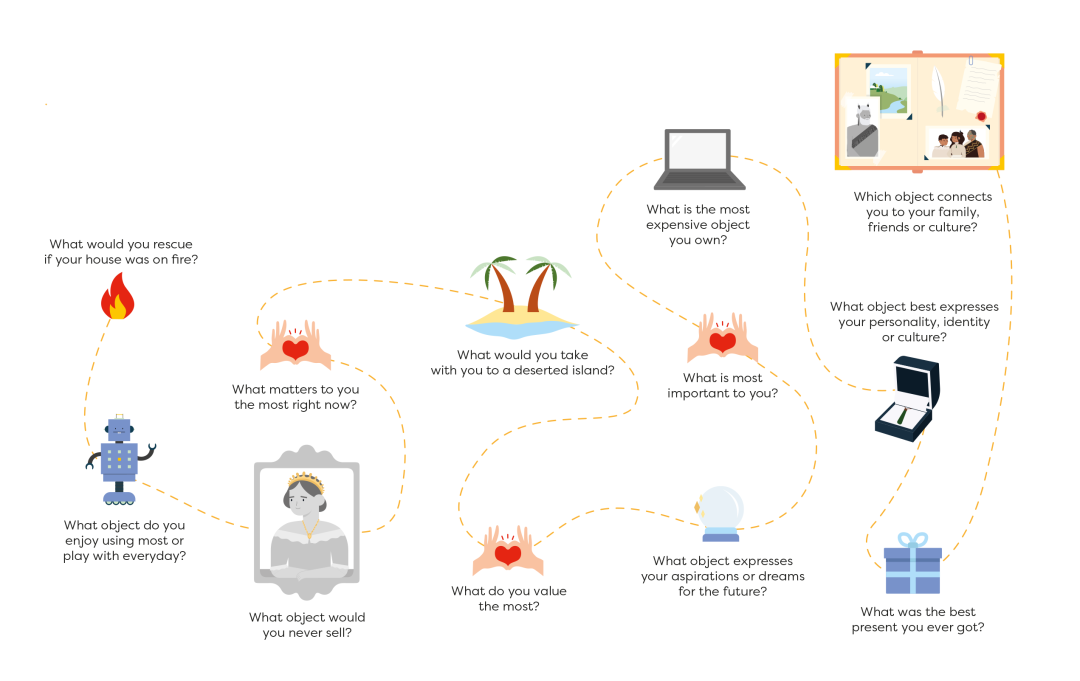
Long description — Treasure map activity
An activity structured as a treasure map. Questions are as follows:
What would you rescue if your house was on fire?
What object do you enjoy using most or play with everyday?
What object would you never sell?
What matters to you the most right now?
What would you take with you to a deserted island?
What do you value the most?
What object expresses your aspirations or dreams for the future?
What is most important to you?
What is the most expensive object you own?
What object best expresses your personality, identity or culture?
What was the best present you ever got?
Which object connects you to your family, friends or culture?
He kimi taonga ā whānau | Family treasure hunt
Before you start to work on your own precious object here is a fun activity for everyone in your whānau to do together. You may be surprised by what you learn about each other and the objects you treasure when you share your stories! If nobody else in your house is available, you can do this by yourself.
Your mission is to find 3 to 5 objects in your house that are precious to your whānau and put your super sleuthing skills to the test by discovering their stories.
These objects may stand on the mantelpiece, lie at the back of the drawer or hide in the attic. What are the precious objects of your family?
Uiuinga | Interview questions
Interview a family member about one of these precious objects. Here are some questions you could ask them:
What is this object?
Who made it?
What is it made of?
Where did it come from?
How old is it?
Why is it precious to you?
How did it come to belong to you?
Bonus question: What’s unique about it or surprising? Why would you never sell it?
Write down notes from the interview.
Hangaia he mahenui whaiaro kōrero ā-whānau | Make a whānau story zine
Draw a zine about one of the stories your whanaunga (relative) has shared with you.
Zines are a small homemade booklet. They can be a great way to share your stories, art, poetry, or other forms of self-expression.
Using your previous notes, select one story from your interview that you can turn into a small zine. Once you’ve finished, you can photocopy your zine and share it with your friends or community.
How to make a One-Page Zine, courtesy of Wellington Zinefest
Fold your zine first and then create your story!
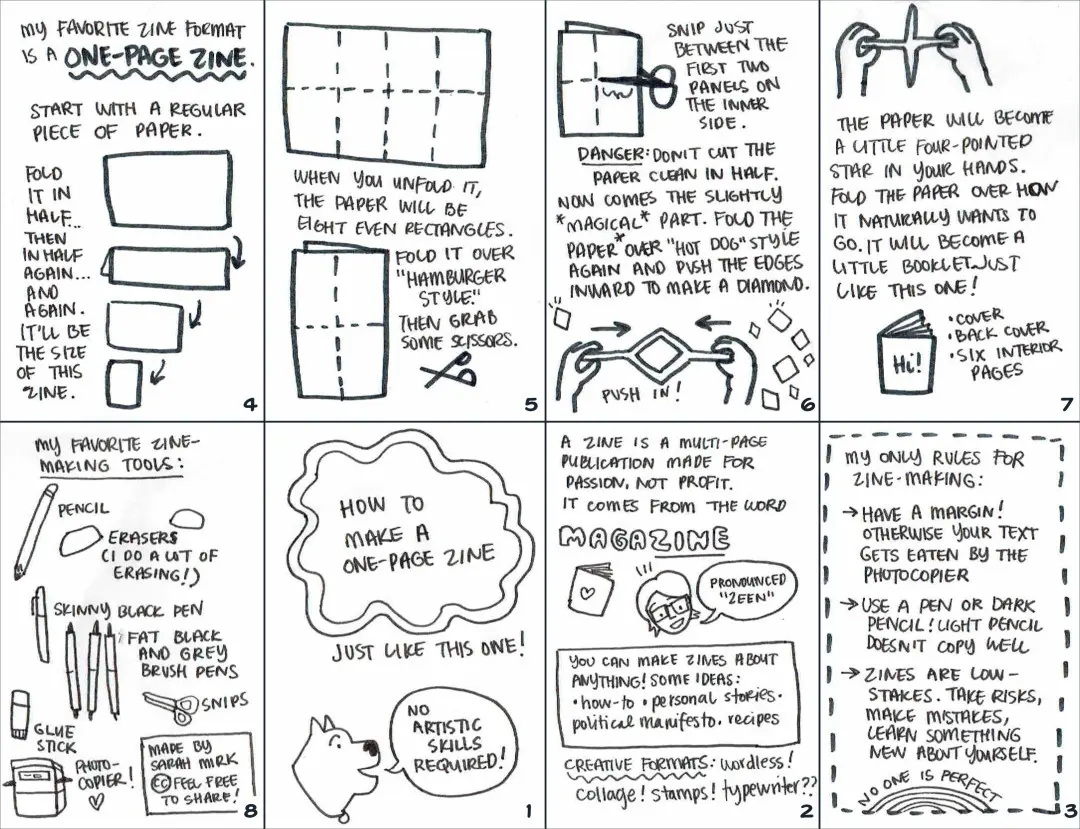
Long description — How to make a one-page zine
Instructions on how to make a one-page zine, presented as a zine. The content of each panel is as follows:
First panel
How to make a one-page zine
Just like this one!
No artistic skills required!
Second panel
A zine is a multi-page publication made for passion, not profit.
It comes from the word magazine.
Pronounced "zeen"
You can make zines about anything! Some ideas:
how to
personal stories
political manifesto
recipes
Creative formswordless!
collage!
stamps!
typewriter??
Third panel
My only rules for zine-making:
Have a margin! Otherwise your text gets eaten by the photocopier
Use a pen or dark pencil! Light pencil doesn't copy well
Zines are low-stakes. Take risks, make mistakes, learn something new about yourself.
No one is perfect
Fourth panel
My favorite zine format is a one-page zine.
Start with a regular piece of paper.
Fold it in half...
Then in half again...
And again.
It'll be the size of this zine.
Fifth panel
When you unfold it, the paper will be eight even rectangles.
Fold it over "hamburger style."
Then grab some scissors.
Sixth panel
Snip just between the first two panels on the inner side.
DANGER: Don't cut the paper clean in half.
Now comes the slightly magical part. Fold the paper over "hot dog" style again and push the edges inward to make a diamond.
Push in!
Seventh panel
The paper will become a little four-pointed star in your hands.
Fold the paper over how it naturally wants to go. It will become a little booklet. Just like this one!
Cover
Back cover
Six interior pages
Eighth panel
My favourite zine-making tools:
Pencil
Erasers (I do a lot of erasing!)
Skinny black pen
Fat black and grey brush pens
Glue stick
Snips
Photocopier
Made by Sarah Mirk
Feel free to share!
Well done for creating a new precious object for your whānau!
Tō ake taonga | Your precious object
Now it’s your turn to start thinking about your precious object and how to exhibit it.
Choose one object which is the most precious to you right now for your exhibition.
There are a few steps to take to ensure that you have examined and documented your precious object so it’s ready to go.
Step 1. Research your object
Remember you researched your name and where you were from earlier on in the activities? Now research your object on the National Library website and see what comes up.
Just put in what your object is…eg. ‘Hei Tiki’ or ‘necklace’ or ‘buzzy bee toy’ then you can get more specific. You can also ask whānau, friends or museum staff what they know about the object.
Write something about your object. You will use this for your object label a bit later.
What is it? Where did it come from? Why is it special?
Step 2. Document your object – take a photo or draw it
Below are some tips on how to take a photo of your precious object like a professional.
Choose a plain background. Try placing your object on a white sheet or coloured fabric that makes it stand out or put it against the wall.
Use indirect natural lighting. Like a window or take your object outside on a cloudy day. You can also use a lamp.
Hold your camera very still. Use a tripod or lean your elbow on something to steady it. Experiment with your camera settings or edit it afterwards until you are happy with the result.
Place your photo here or draw your precious object below
Step 3. Write a condition report
A condition report will tell you if there is any damage.
Tell us about the condition of your object
What’s it made of?
Fact: Two of Te Tiriti o Waitangi sheets were written on very thin sheep’s skin (called parchment).
What are the measurements?
Fact: Did you know the Women’s Suffrage Petition is 274 metres long.
Does it have any scratches or dents?
Is there any discolouration or damage to it?
Step 4. Write an Object Label
Now imagine you’re putting together a display case for your exhibition. What additional information can you find out about your objects? Look online – perhaps the National Library website is a good place to start the National Library website or your local museum.
Write down the following for your object label:
Object title
Year (When was it made)
What materials is it made out of?
It’s precious because...
Surprisingly... (What you may not know about the object at first glance as to why it’s precious)
Object label written by
Age
Location (district or town)
Kaitiakitanga | How to look after your precious object for the future
Curators and collection managers keep precious objects safe for future generations. This is often called preservation or conservation.
Think about ways you can keep your precious objects safe and prevent them from being damaged. How can you store or handle them which will keep them safe – you probably don’t need the white gloves but ‘handling with care’ is a great way to start.
The He Tohu exhibition lets people see ‘the real thing’ – this can be quite awe-inspiring.
Having the documents in a public exhibition for the next 25 years could damage the documents. The heart of the He Tohu exhibition is a room called He Whakapapa Kōrero – the document room. This room was designed to protect and enhance the mana of the precious documents it holds inside.
Because the documents are old and extremely delicate they are kept in special environmental conditions to ensure that they last for the next 500 years at least. The documents have survived against the odds. They feature the scars of fire, neglect, water damage, and were nibbled by rats and mice. The way we care for them is a reflection of the value we put on them.
Fact: Many of the signatures on Te Tiriti o Waitangi have been eaten away by rats and mice!
Protecting against the elements
Temperature: The document room is cool and dark. We keep the temperature in this room at a constant 19 degrees.
Light: Light is harmful to the documents, so the lights are kept low and when people aren’t in the room, the lights go off automatically. Light is controlled in the cases with sensors so we can measure how much light the documents receive. And... no flash photography please!
Earthquake and fire: If there is a fire, the curved wooden ceiling will release a fire-retardant foam to stop the fire. In an earthquake the document room is one of the safest places in Pōneke!
How to take care of your collections at home
The National Library of New Zealand has loads of helpful collectors guides available to help your precious things last for generations.
Search ‘Caring for your collections’ on the National Library website and uncover the tips and tricks to take care of your books, artwork, digital images, and marae photographs.
Write down what you will do to ensure your object is safe and can be enjoyed by future generations.
Fact: The Women’s Suffrage Petition has signatures in pink, green, purple and red ink – they are very light sensitive.
Hangaia tōu ake tohu | Create your own tohu
There is a lot we can learn from signatures. For example, artists will often sign their paintings, illustrations or comics with their signature and usually people sign the letters they write.
Signatures or tohu help us understand the provenance, or history of an object; such as who painted it, who owned it, and what was happening at the time that influenced the work or society. Documents, like the Women’s Suffrage Petition or the Treaty of Waitangi which show support from groups of people often feature numerous signatures.
Fact: Many rangatira signed He Whakaputanga and Te Tiriti o Waitangi by replicating the image of their tā moko (facial tattoos). Some chose a symbol to represent their signature.
Fact: The Women’s Suffrage signatories used different coloured ink which were new and fashionable at the time.
Have a go at designing your own tohu (mark)
Draw, write or make a vision board. What symbol and colours would you choose? Write why you designed it this way.
Kua mutu. Tino pai! | That’s a wrap. Well done!
Come visit us at the National Library for a tour of He Tohu or use one of our cool He Tohu Audio Guides or our He Tohu New Zealand Sign Language Guides.
To book your tour, email bookings@hetohu.co.nz
Need help getting your school to the He Tohu exhibition in Wellington or the He Tohu experience in Auckland? Contact the Te Puna Foundation He Tohu Travel Fund at info@tepunafoundation.org.nz
Te Puna Foundation He Tohu Travel Fund
Ngā mihi ki a koe!

Ka kite i a koe i te whare pukapuka ā-motu
See you at the National Library (or online).
Join us on social media:
Facebook — National Library of New Zealand
National Library Twitter — @NLNZ
Services to Schools Twitter — @L2_S2S
About the He Tohu exhibition
The He Tohu Exhibition is presented by Archives New Zealand Te Rua Mahara o te Kāwanatanga and the National Library of New Zealand Te Puna Mātauranga o Aotearoa, which are part of the Department of Internal Affairs Te Tari Taiwhenua.
For more information about He Tohu or to book a school visit He Tohu.
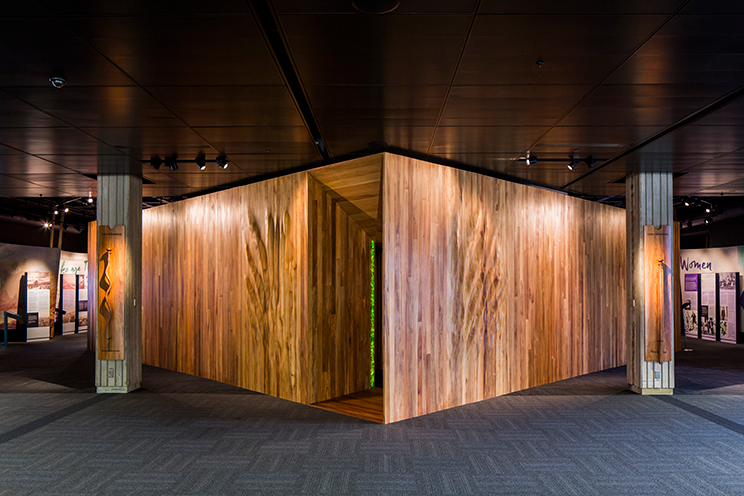
Formally opened on 19 May 2017, He Tohu was developed in partnership between the Crown and Māori, with significant input from women’s groups nationwide. Māori were represented by iwi leaders from throughout the country, particularly Te Ātiawa, Taranaki whānui and Ngāti Toa Rangatira.
In developing the exhibition, the Department of Internal Affairs He Tohu development team were also guided by two advisory groups, made up of leading Māori experts in areas including history, design and language.
He Tohu at the National Library replaced the previous display of these documents in the Constitution Room at Archives New Zealand Te Rua Mahara o te Kāwanatanga, however, the documents remain under the statutory care of the Chief Archivist. The Chief Archivist and the conservators at Archives New Zealand are responsible for their care and preservation.
In 2019, He Tohu Tāmaki opened at the National Library in Auckland. It includes a virtual reality exploration of the Wellington He Tohu Exhibition document room, and learning programmes for school groups.
Related content

Precious workbook — Ages 7 to 11
Use our fun workbook to discover why some things are precious and uncover the things that are precious to you. Either grab a piece of paper and work through the activities from the webpage or print the booklet. Suitable for ages 7 to 11.